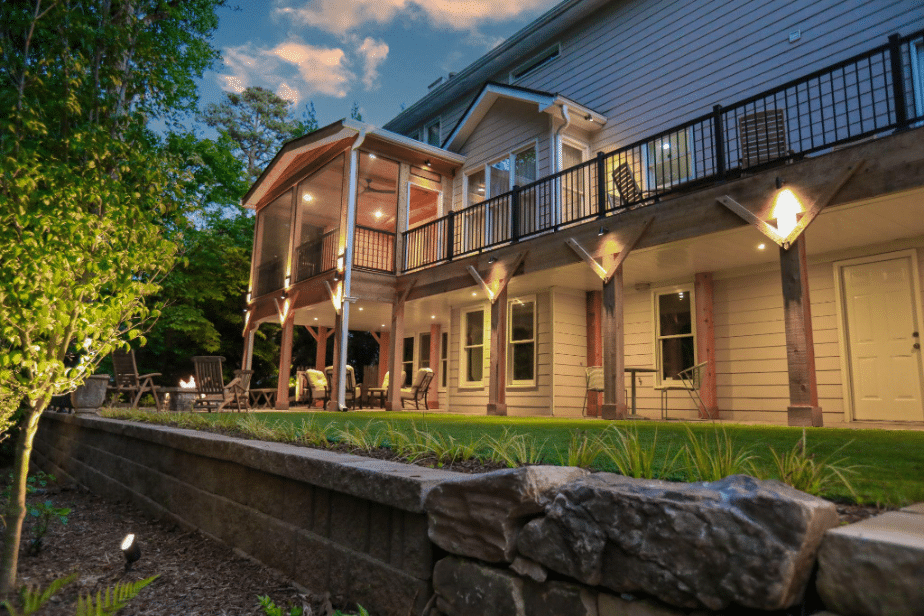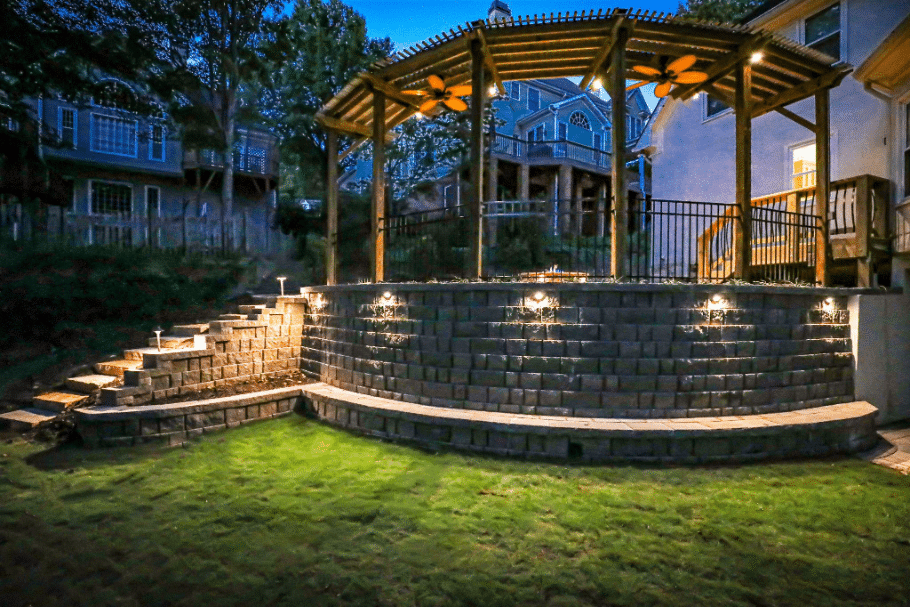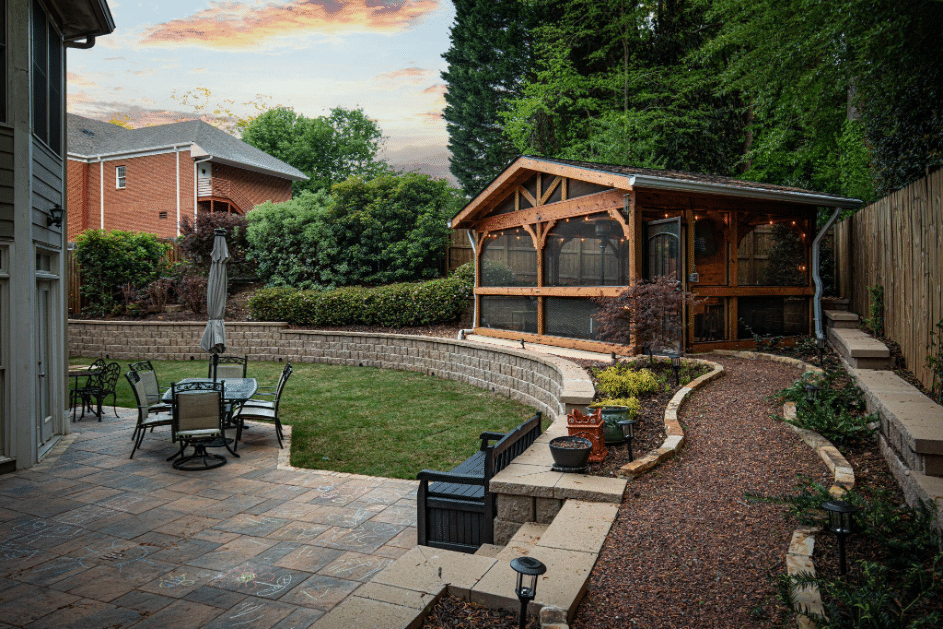Retaining walls is essential in landscaping and building, providing both functional and aesthetic benefits. They help stabilize the sloped ground, reduce soil erosion, and can even be a decorative feature in a garden or property. Like other structures, retaining walls have a lifespan. In this blog, we will explore various types of retaining walls, the elements that influence their lifespan, and how to maintain them to ensure their durability.
What is a Retaining Wall?
A Retaining Wall is a structure built to withstand the pressure of the earth behind it. It is often made of wood, stone, concrete blocks, or bricks and can serve both utilitarian and decorative purposes. Retaining walls are typically constructed to retain soil or water and/or provide support for buildings or other structures such as bridges or roadways.
Benefits of Retaining Wall:
1. Prevents erosion
The most common reason people put retaining walls on their property is to prevent erosion. If your property is hilly or sloping, severe rain, winds, and even irrigation will likely affect its geography. Consider retaining walls as a technique to retain the land and your property’s layout in its current state.
2. Manages runoff
Retaining walls can alter water flow, especially during a severe storm. If flood waters intrude on your home every time it rains, a retaining wall can help you avoid significant property damage.
For example, when rainwater runoff seeps into your home’s foundation, the freeze-and-thaw cycle can cause fractures, resulting in expensive repairs. Managing stormwater runoff preserves local wildlife and prevents pollution.

3. Prevents sinkholes
On the topic of water, severe rains can erode the bedrock. When this occurs, sinkholes may arise. Areas with limestone bedrock are particularly vulnerable.
According to the United States Geological Survey, Florida, Texas, Alabama, Missouri, Kentucky, Tennessee, and Pennsylvania are the states most sinkhole-prone. Retaining walls help prevent sinkholes by dispersing water and reducing pooling.
4. Provides useable land for farming and leisure
Planting vegetation is an excellent way to protect your yard from soil erosion. However, if your property is experiencing rapid deterioration, professional assistance may be necessary to develop a robust solution. A retaining wall or a tiered retaining wall can provide level, usable surfaces while effectively addressing erosion problems.
What would you do with more usable land? Plant a garden? Create a seating area that overlooks your property. Add a television and bar for entertainment. Installing an outdoor kitchen?
5. Aesthetically attractive
Whether made of concrete, natural stone, brick, or treated wood, retaining walls add an attractive and visually charming touch to your home’s exterior. Retaining walls allow you to rebuild unattractive drop-offs, create lovely flower beds, and add texture to your landscape.
6. Adds Property Value
Continuing the concept of curb appeal, Retaining Wall Design Ideas increase the value of your home. The combination of erosion control, structural support, functional space, and aesthetics increases property and resale values. According to the American Society of Landscape Architects, landscaping efforts can increase a home’s value by up to 20%. In addition, the average resale return ranges between 100 and 200 percent.
Types of Retaining Walls:

There are various retaining walls, each with distinct characteristics and applications. The most popular varieties include gravity walls, reinforced walls, sheet pile walls, gabion walls, and segmental retaining walls.
1. Gravity Walls
Gravity Walls use their weight to hold back the soil. They are usually formed of stone, concrete, or other heavy materials for retained heights of about 3m and are commonly utilized in minor landscaping projects.
2. Reinforced walls
These walls, also known as cantilevered walls, are reinforced with steel bars and intended to bear heavier loads. They are widely employed in commercial and industrial applications.
3. Sheet Pile Walls
These thin walls are made of steel, lumber, or vinyl driven straight into the soil. They are commonly utilized in small places or for temporary building projects.
4. Gabion Walls
Gabion walls consist of piled stone-filled gabions connected with wire. They are commonly utilized in landscaping and can be highly appealing.
5. Segmented Retaining Walls
Finally, segmental retaining walls are constructed of interlocking concrete blocks and do not require mortar. They are simple to install and are commonly utilized in residential landscaping projects.
Also Read: Is Synthetic Turf Installation Worth it?
Factors Impacting the Lifespan of a Retaining Wall
Several elements can influence the life of a retaining wall. These include the materials utilized, the wall’s design, the installation’s quality, and the level of care required.
- Material: The type of material chosen considerably impacts the longevity of a retaining wall. Because of their resistance to rot and vermin, concrete and stone walls typically endure longer than wood or lumber walls.
- Design: A well-designed wall that considers the slope of the ground, the kind of soil, and the load the wall must carry can last many years. However, a poorly built wall may fail prematurely.
- Installation: Proper installation is critical to the durability of a retaining wall. This includes preparing the foundation, ensuring good drainage, and employing appropriate construction techniques.
- Maintenance: Regular maintenance can significantly extend the life of a retaining wall. This involves inspecting for signs of damage, ensuring the drainage system is functioning correctly, and resolving any concerns as they develop.

Lifespan of Different Retaining Walls
The lifespan of a retaining wall varies significantly depending on the type of wall and the elements stated above. Below are some general estimates:
- Gravity walls: Depending on the material used, they can last between 50 and 100 years.
- Reinforced Walls: With proper maintenance, walls can last over 100 years.
- Sheet Pile Walls: These walls are frequently used temporarily, but with reasonable care, they can survive up to 30 years, depending on the material.
- Gabion walls: Last for up to 100 years, depending on the stone type and wire quality.
- Segmental retaining walls: Endure up to 50 years if properly maintained.
Contact the Retaining Wall Contractor in Atlanta
Are you looking for professional retaining wall installation services in Atlanta? If so, then contact Outdoor Makeover and Living Spaces Today! Our team of retaining wall contractors is highly skilled and understands every element in a backyard, so the backyard retaining wall we design and build will be better thought out and integrated.
So, what are you waiting for? Contact us today!
